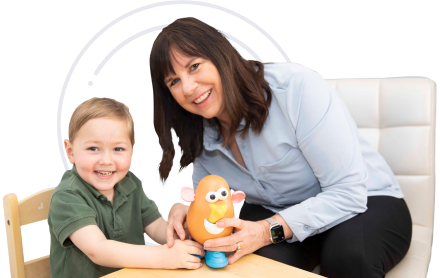IEPs (Individualized Education Plans) are super important. My son, Lucas, who is now 23 years old was three when he got his first IEP. At that point, I didn’t know much about what an IEP was but I learned a lot over the years. So, today I want to share what an IEP is, why it’s really important for you as a parent or professional to know about, and how you can advocate for what is most appropriate.
An IEP is considered a contract between you and an educational entity – such as a school. IEPs are under federal regulations in the United States to provide a free appropriate public education. So, if you are in a public education setting from ages three through 21 for kids with autism and other disabilities, the public agency will have to provide an IEP. Parents need to be a part of the IEP team as well. So don’t let the school or government just present the IEP. You need to be an integral part of developing it.
The IEP has three big parts. There is the assessment, which looks at where your child is at. Because if a child doesn’t have single words and in the IEP goals are learning prepositions or using three-word phrases, there’s a disconnect. We have present education levels, not just in terms of language but also self-care and behavior issues. Where are they at with reading, math, writing? How is their play and socialization? Present education levels are a big part of the IEP.
For kids that are under three years old, in the United States, there’s the Individualized Family Support Plan (IFSP). And for adults like Lucas, we have a different kind of plan, an Individualized Support Plan (ISP). But overall, if you receive governmental funding for education or for support, you will have some kind of plan with an assessment, goals, and some kind of placement or services that are going to be given. And like I said, this is like a contract. You want to make sure that what’s in the IEP is individualized. It meets the needs of the child. And when you look at it in terms of those chunks, you’ll be able to tell if the IEP is appropriate and if the plan is working.
An IEP must be based on the child’s assessment and it also must include family priorities. The child should be making progress. It is usually set for a year, so every year you would come up with new goals and talk about placement. But you can always request an emergency IEP meeting if the child is making a lot of progress, the child is having problem behaviors, the child is making no progress with the current plan or there are safety concerns.
Another important thing I want to say in terms of IEPs is to step back and look at the forest, not the trees. You want to program very systematically so that you’re not programming too high for a child at this level. Also, take into account self-care and behavior problems in the IEP. Those can all be IEP goals and they can be a big part of the placement.
We do go deeper into IEPs within my online courses and communities in terms of advocacy and making sure the program is very step by step and that the child meets all the prerequisites before going further. To learn more about my online courses and how you can begin step-by-step programming, you can start out by taking my free two-minute autism quiz at marybarbera.com/quiz. That’ll get you into a free workshop and you’ll learn more about my online courses and community there.
In closing, it’s extremely important for individuals with autism to have effective IEPs in place. Every child with a disability in the United States is legally entitled to one. Sometimes the goals are not appropriate and the target goals may need to be changed. The placement may also need to be changed. But it all has to work together, so don’t just try to change the placement without looking at the present education levels and the goals. Remember to take my quiz at marybarbera.com/quiz to learn more.

